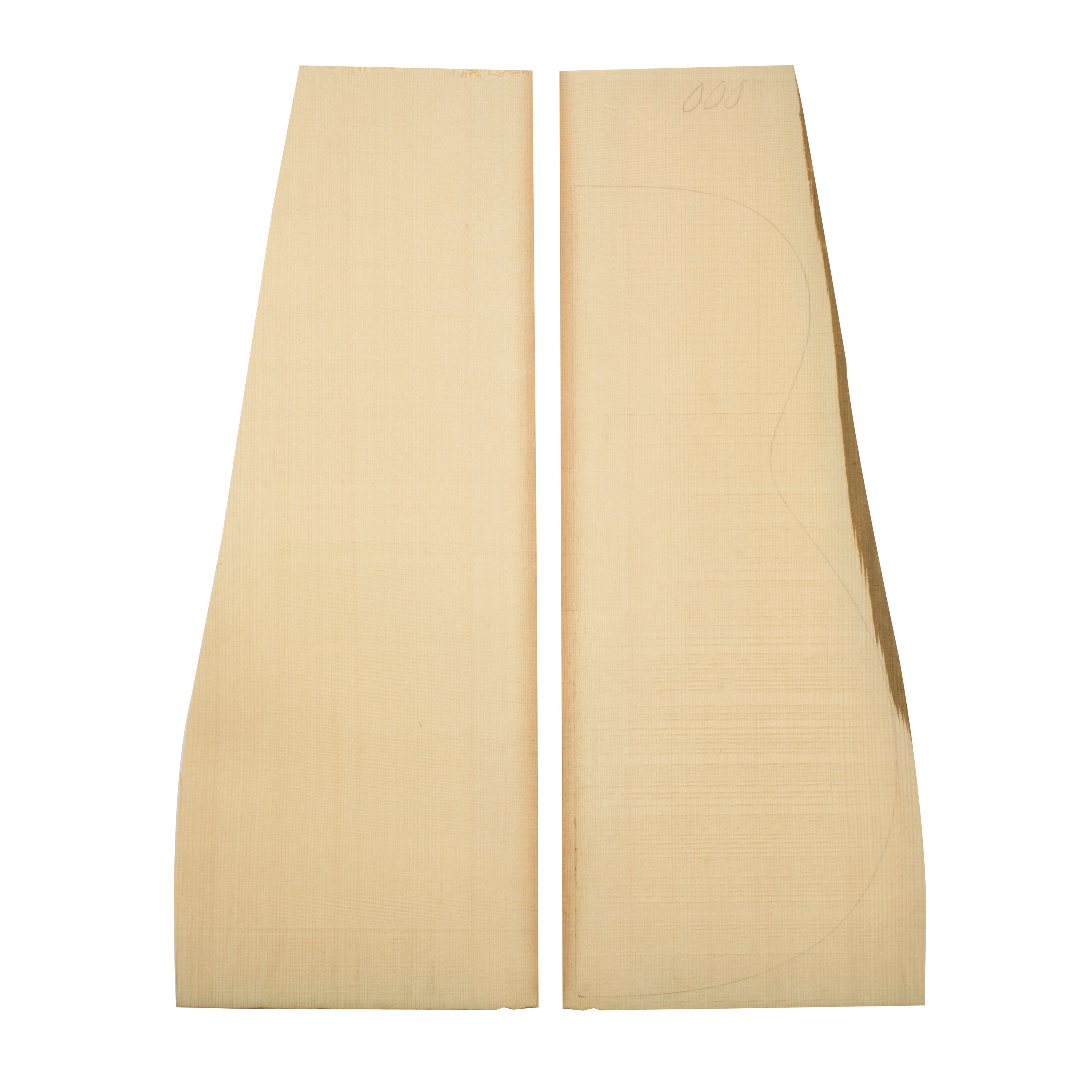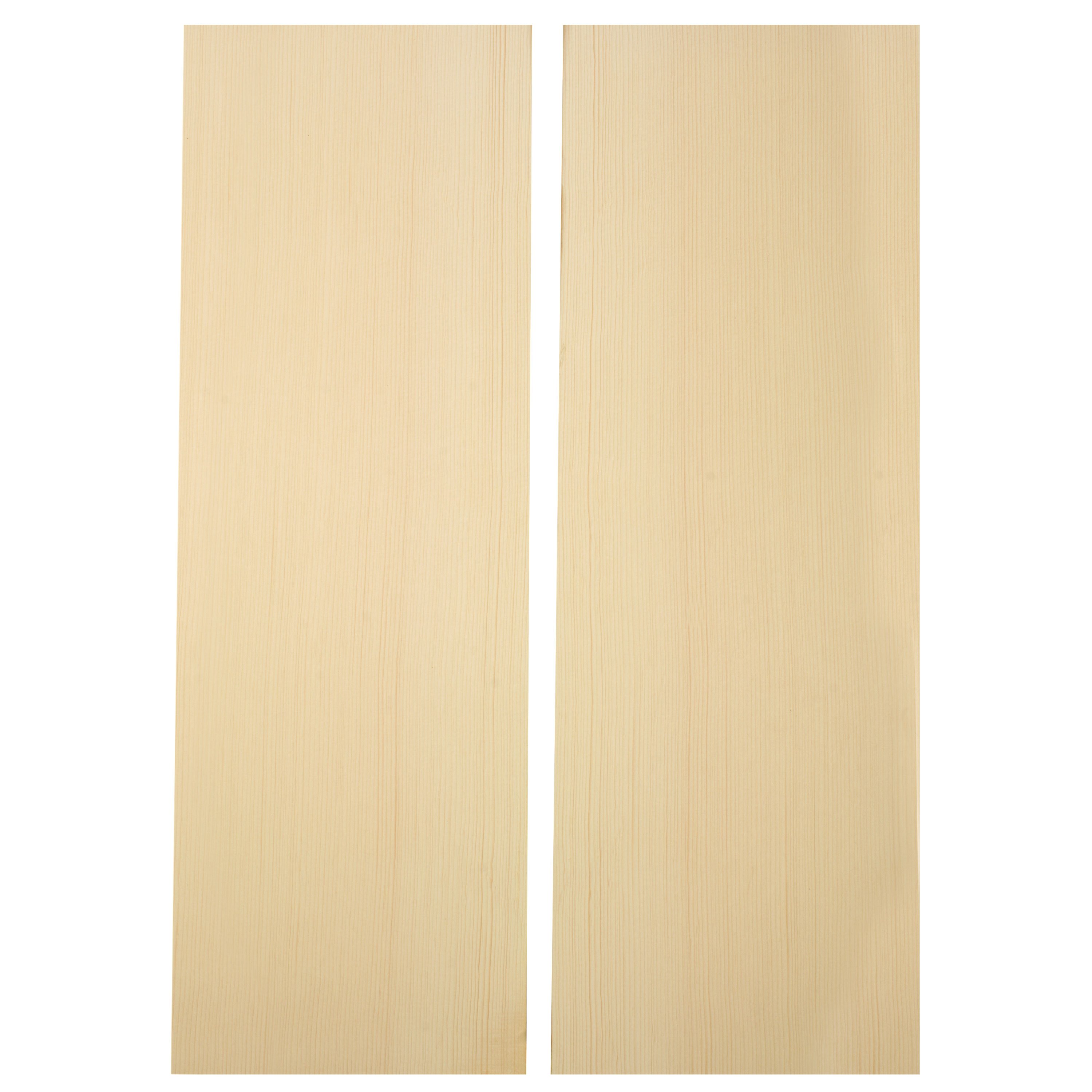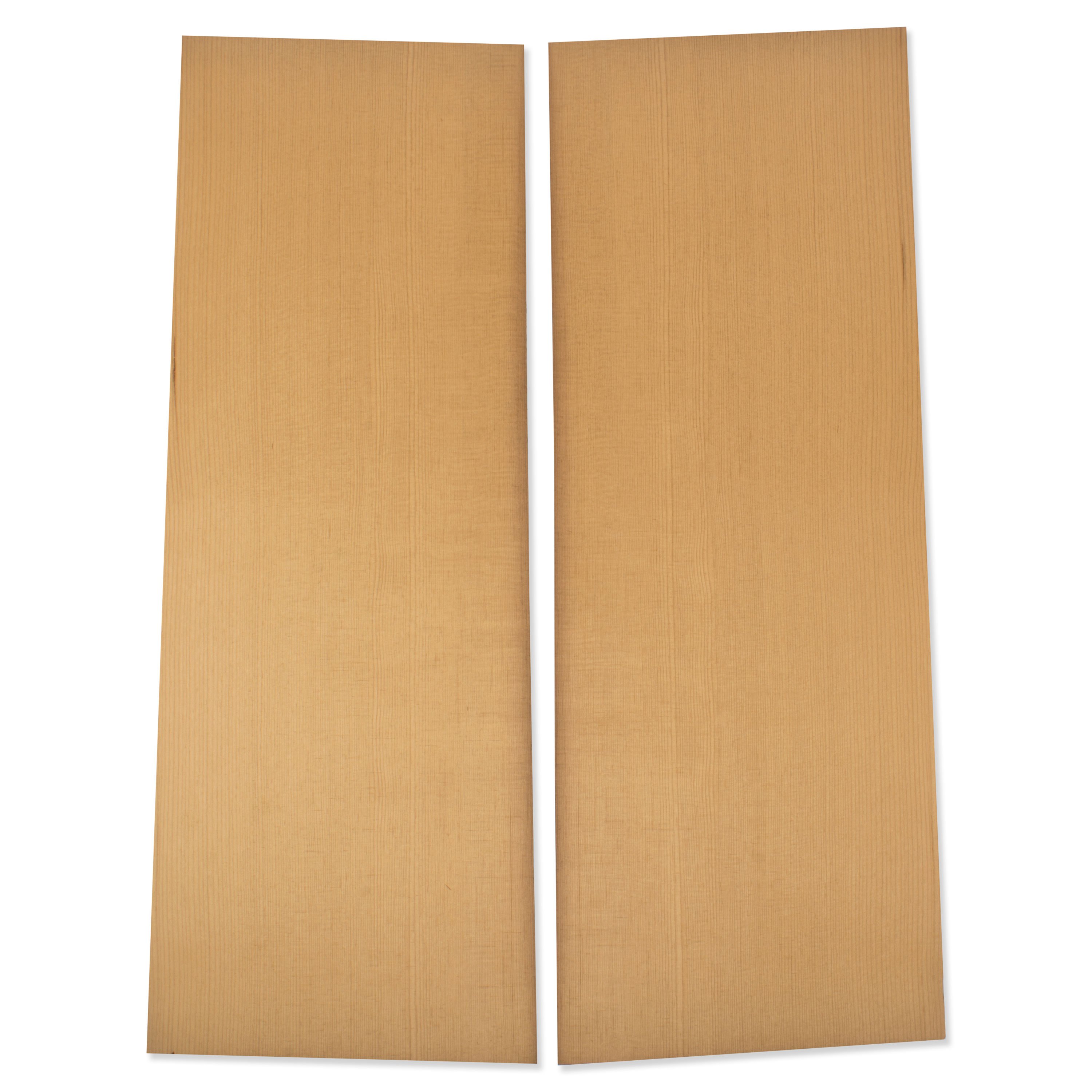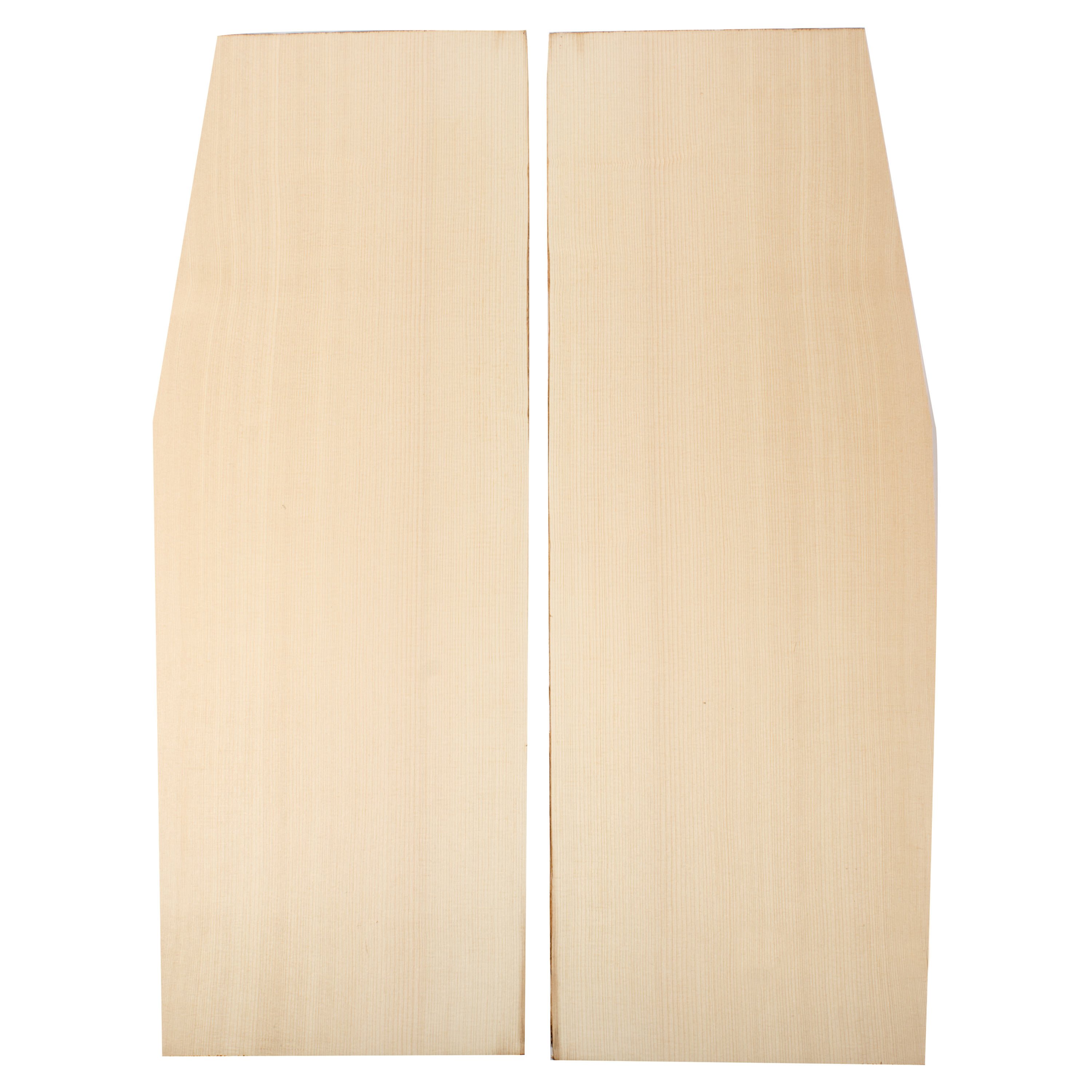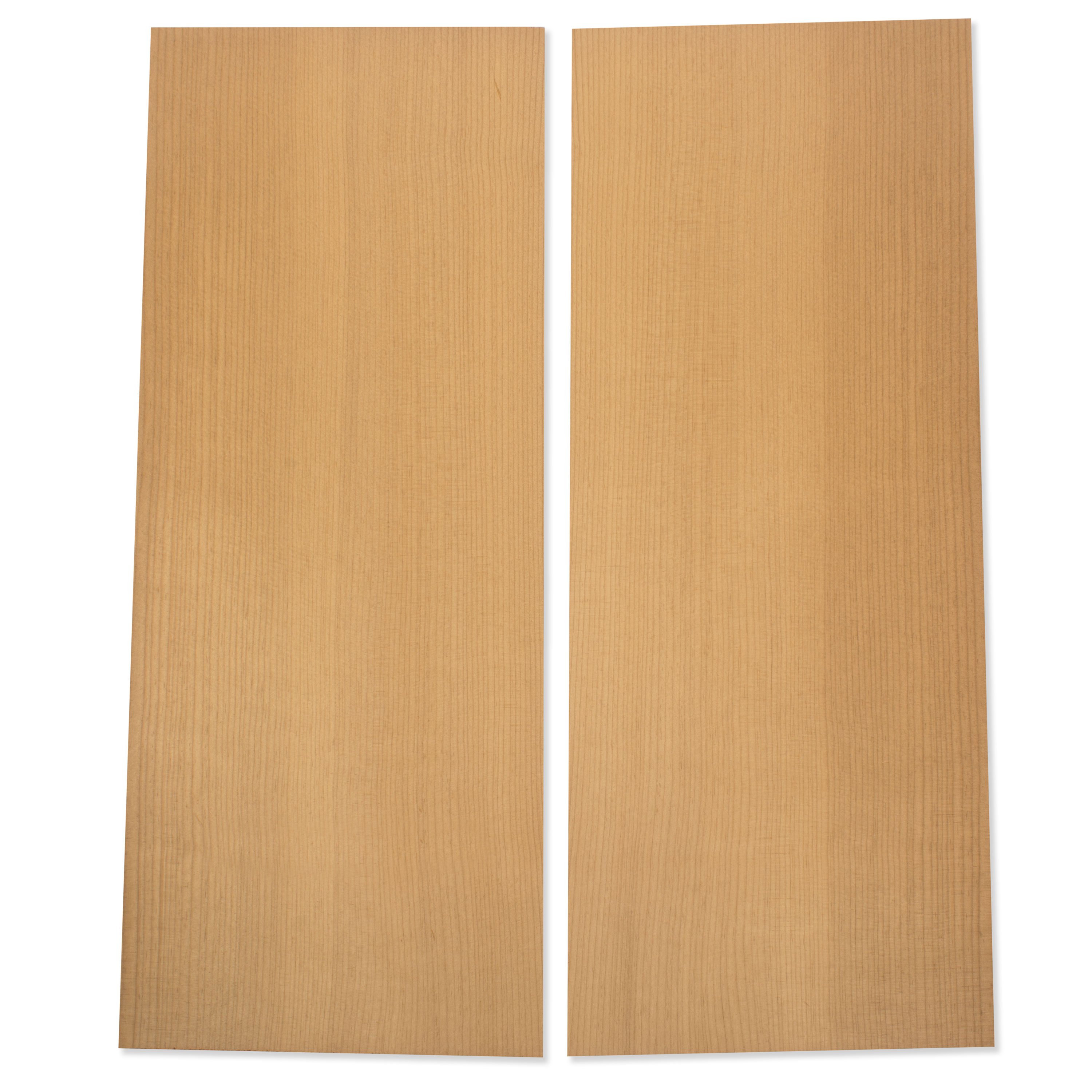Red Spruce Soundboard for Small Guitar
Exceptional tonewood tops from a few choice trees felled at high altitude in the Appalachian mountains.
Red Spruce was used on the most prized Martins from the late 1920s through 1945, and Gibson also used it until 1945. For many collectors today, there is simply no comparison to the Red Spruce tops from that Golden Era.
Bookmatched set of two halves. When joined they're large enough for classical, 000, and parlor size guitars.
- Each half is approximately 8-1/4" x 23" (210mm x 584mm)
- Thickness-sanded to 0.125"-0.130" thick (3.18mm - 3.30mm)
Unsanded soundboards
Approximately 3/16" (4.7mm) thick, ready for thickness-sanding to your own specs.
Red Spruce (also called Adirondack Spruce) responds to the full range of attack on the strings. Where other top woods decay or sound muffled when played hard, Red Spruce stays clear and powerful. It looks like other Spruce varieties, with wider (and often more pronounced) grain lines, warmer color and more color variation. Higher grades have more even color and closer grain lines.
Limited availability: See our special selection of Old Growth Red Spruce (sold separately). Old Growth trees grew in competition with surrounding trees for rain, sunlight and nutrients. Growing slowly, their grain is closer-spaced than regular Red Spruce.
Use our grading system to choose your soundboard:
Color: Higher grade soundboards have more consistent color (color affects the instrument's appearance only, not its tone).
Grain straightness: Higher soundboard grades have straighter, tighter, and more uniform grain. While closely spaced grain has been traditionally favored, luthiers have found that wider grain can produce very good tone.
Quartersawn grain: The higher the grade, the more closely quartersawn the wood. Perfectly quartered wood is more dimensionally stable and moves proportionally with changing temperature and humidity environments. This helps to ensure structural integrity and resists cracking better than other types of cuts.
Grain run-out: Our soundboards are sawn from split billets to reduce the amount of grain "run-out," caused by a twist in the tree. By splitting the log, the twist is followed when sawing. Higher grade soundboards have less run-out.
Origin and drying: Our soundboards (unless otherwise noted) are from western North America, and have been kiln-dried and stored in a climate controlled environment.




